Indoor plants not only add beauty to your home but also offer numerous health benefits. They act as natural air filters, improving indoor air quality and promoting better respiratory health. If you aim to increase the amount of oxygen in your surroundings or create a clean and refreshing living space, it’s a wise decision to incorporate the most effective indoor plants for oxygenation.
These air-purifying plants are renowned for their ability to produce oxygen and enhance indoor air quality. They serve as natural air filters, removing harmful pollutants, thus making your home a healthier space. With their diverse varieties, there is an indoor plant suitable for every room and preference.
Boston Fern
The Boston Fern, scientifically known as Nephrolepis exaltata, is a remarkable indoor plant that serves as an effective air purifier. It has gained recognition for its ability to absorb formaldehyde, a common indoor pollutant found in household items such as plywood, carpeting, and cleaning products.
This beautiful fern is not only aesthetically pleasing but also plays a vital role in improving indoor air quality. By filtering out formaldehyde, the Boston Fern helps create a healthier living environment, reducing the risk of respiratory issues and allergies caused by this toxic compound.
In addition to its air-purifying properties, the Boston Fern acts as a natural humidifier. It releases moisture into the air, increasing humidity levels and combatting dryness. This makes it particularly beneficial in homes or offices with dry climates or during winter months when the air tends to lack moisture.
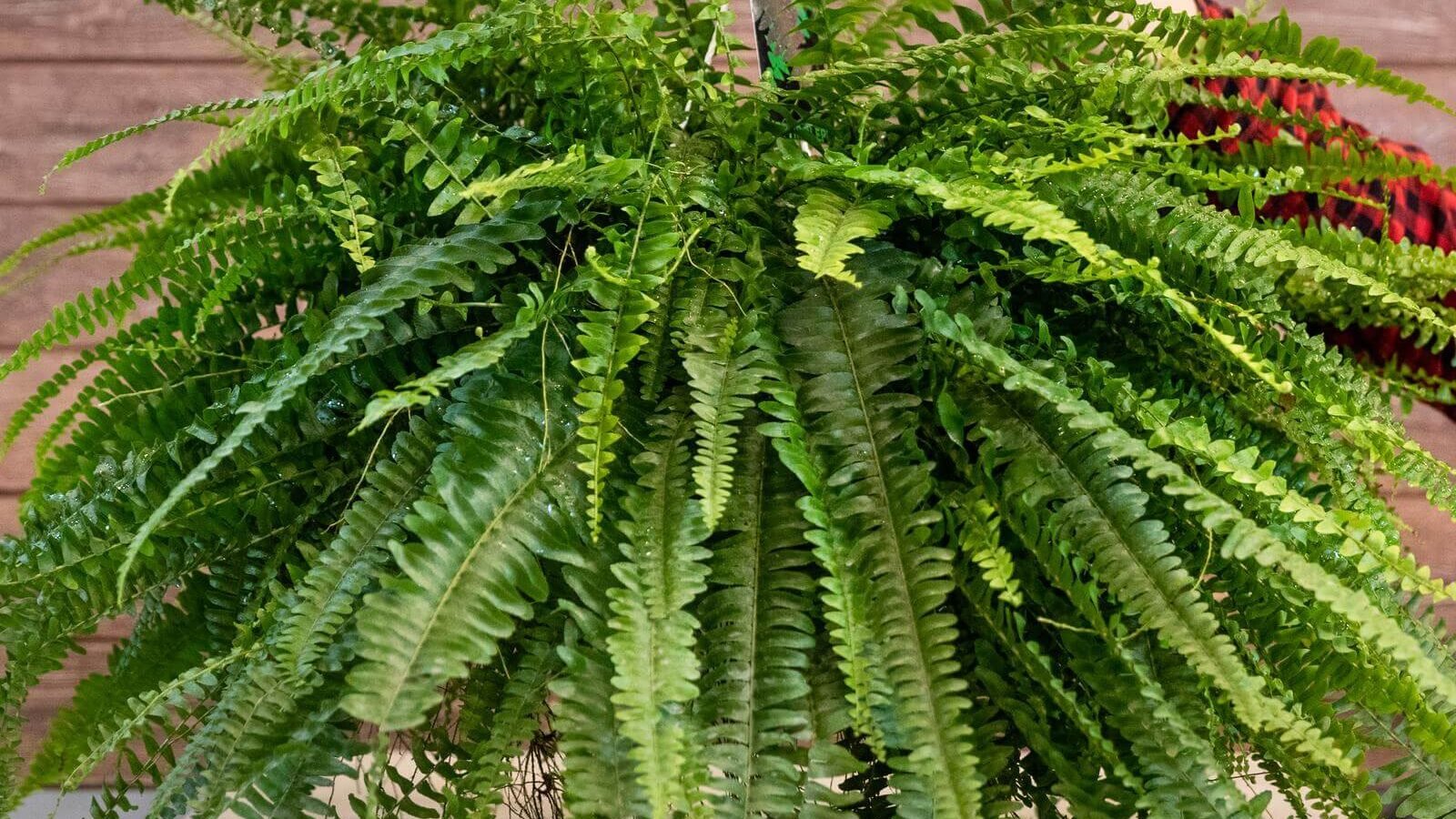
Did you know? The Boston Fern was popularized during the Victorian era, thanks to its lush foliage and graceful arching fronds. It remains a cherished houseplant for its beauty and air purification abilities.
| Benefits of Boston Fern | Scientific Name | Air Purification | Humidifying Properties |
|---|---|---|---|
| Enhances indoor air quality by absorbing formaldehyde | Nephrolepis exaltata | ✓ | ✓ |
| Acts as a natural humidifier by releasing moisture | Nephrolepis exaltata | ✓ |
Plant Care Tips for Boston Fern
- Place the fern in a well-lit area away from direct sunlight
- Keep the soil consistently moist but not overly saturated
- Maintain a humid environment by misting the plant regularly
- Ensure adequate drainage to prevent waterlogging
- Feed with a balanced liquid fertilizer every two weeks during the growing season
- Trim any yellow or brown fronds to maintain its vibrant appearance
Boston Ferns are relatively low-maintenance and can thrive in various room temperatures. With proper care, this air-purifying plant will not only freshen your indoor air but also add a touch of natural beauty to your living space.
Weeping Fig
The Weeping Fig, scientifically known as Ficus benjamina, is an exceptional air purifier that has been extensively researched by NASA. This elegant houseplant does more than just enhance the aesthetic appeal of your space—it actively eliminates airborne pollutants, making it an ideal addition to any indoor environment.
One of the remarkable qualities of the Weeping Fig is its ability to effectively remove xylene and toluene from the air. These harmful volatile organic compounds (VOCs) are commonly found in paint thinners and solvents, posing risks to human health. By introducing the Weeping Fig into your home or office, you can significantly reduce the presence of these chemicals and create a healthier indoor environment.
The Weeping Fig is particularly effective at eliminating airborne pollutants like xylene and toluene, commonly found in paint thinners and solvents.
This air-purifying plant is relatively low-maintenance, making it suitable for both beginners and experienced plant enthusiasts. It thrives in a bright, indirect light environment, but it can also adapt to lower light conditions. It is essential to avoid placing the Weeping Fig in areas with sudden temperature fluctuations or drafts.
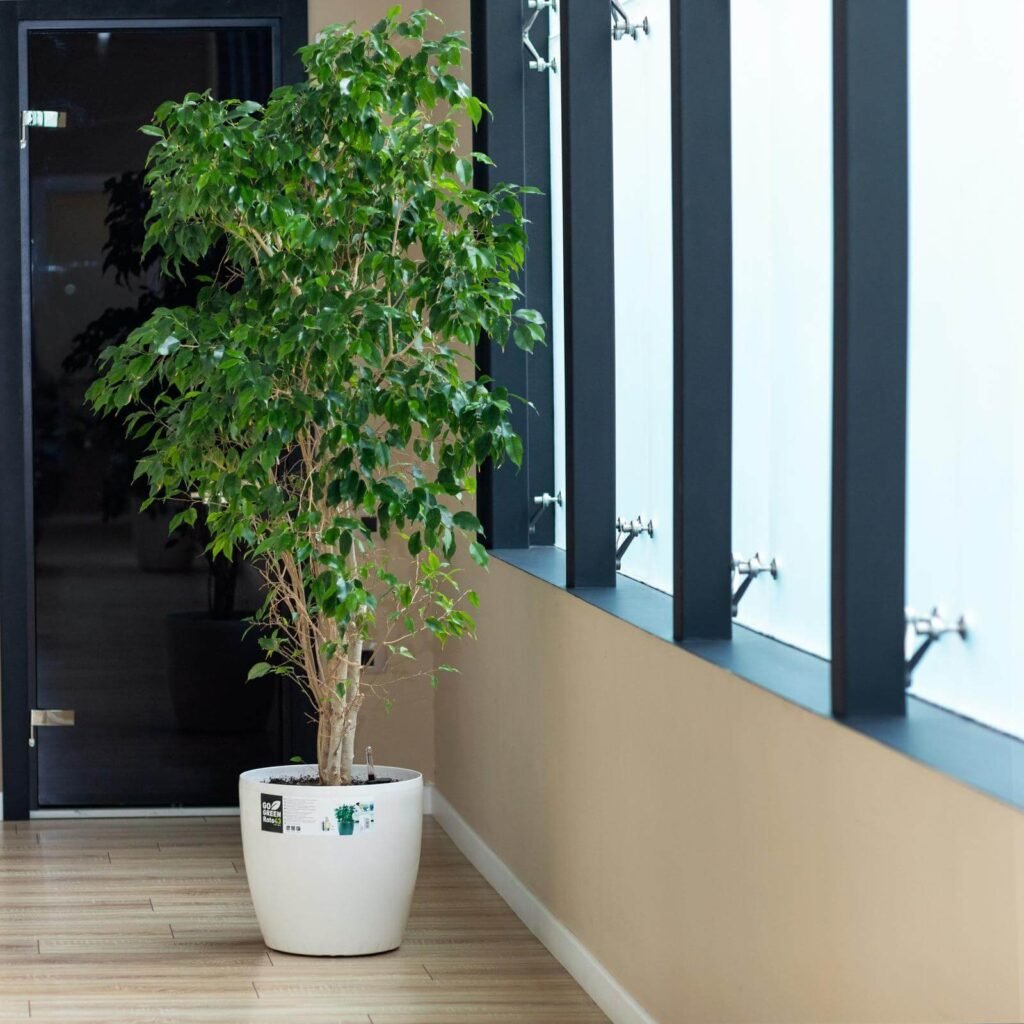
When caring for your Weeping Fig, ensure that the soil remains consistently moist but not overly saturated. Regular watering and occasional misting will provide the necessary humidity for this tropical plant to thrive. Pruning may be required to maintain its shape and appearance.
Benefits of the Weeping Fig:
- Effectively eliminates xylene and toluene from the air
- Improves indoor air quality by removing harmful pollutants
- Enhances the aesthetic appeal of your space
- Thrives in various light conditions
- Low-maintenance and suitable for beginners
Aloe Vera
Aloe Vera, scientifically known as Aloe barbadensis, is a powerhouse when it comes to both medicinal properties and air purification. This low-maintenance succulent not only adds beauty to your indoor space but also acts as a natural air purifier, making it an excellent choice for improving indoor air quality.
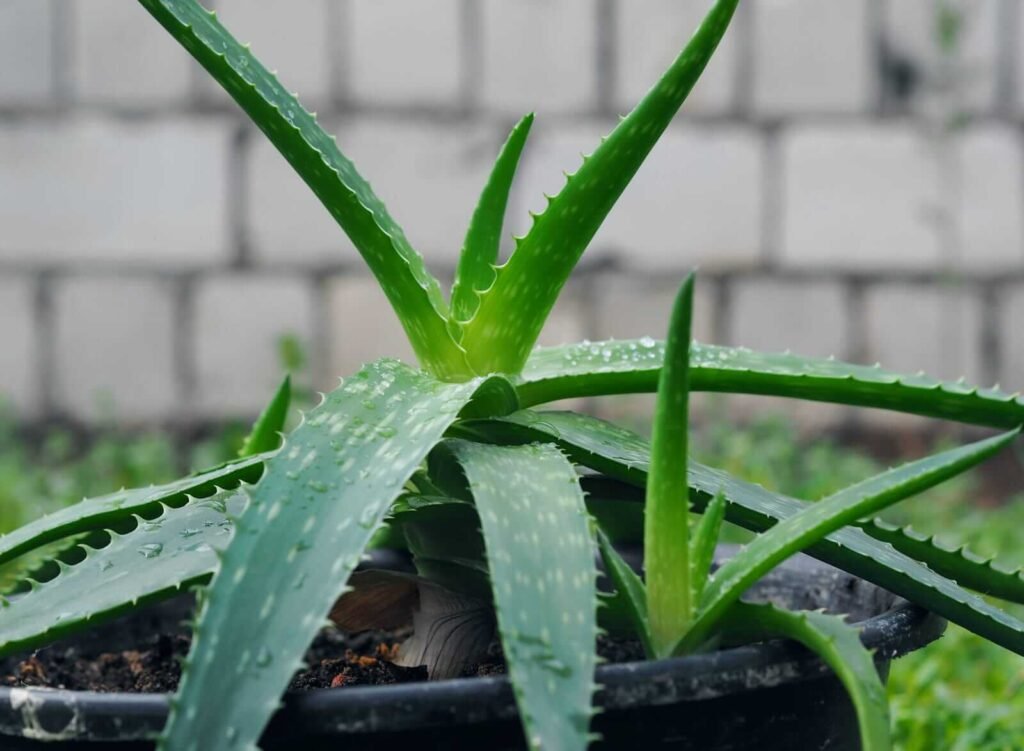
Aloe Vera has the remarkable ability to remove formaldehyde from the air, a common indoor pollutant found in cleaning products, furniture, and carpets. Formaldehyde can cause respiratory irritation and discomfort, making it crucial to have a reliable air purifier like Aloe Vera in your home.
One of the best things about Aloe Vera is its low maintenance nature. It thrives in bright, indirect light and prefers well-drained soil. Aloe Vera only requires watering every two to three weeks, making it an ideal choice for busy individuals or those who are new to plant care.
The soothing gel inside Aloe Vera leaves also offers various health benefits. It can be applied topically to heal burns, cuts, and skin irritations. With Aloe Vera, you get both a natural air purifier and a versatile medicinal plant all in one.
Spider Plant
The Spider Plant, scientifically known as Chlorophytum comosum, is a popular choice for indoor gardening enthusiasts. Not only does it add a touch of elegance to any space with its cascading foliage, but it also acts as an efficient air purifier.
One of the key benefits of the Spider Plant is its ability to eliminate airborne pollutants that can have a negative impact on our health. It has been proven to effectively remove carbon monoxide and xylene, which are commonly found in indoor environments.
Another remarkable feature of the Spider Plant is its adaptability to low-light conditions. This makes it an excellent choice for those areas in your home that do not receive direct sunlight. Whether you place it in a dimly lit corner or use it to brighten up your office, the Spider Plant will thrive and continue to purify the air around you.
Not only is the Spider Plant an air purifier, but it is also a low-maintenance houseplant. Its resilience and ability to tolerate a range of growing conditions make it an ideal choice for beginner plant parents. With minimal care, you can enjoy the benefits of improved air quality and a touch of greenery in your indoor spaces.
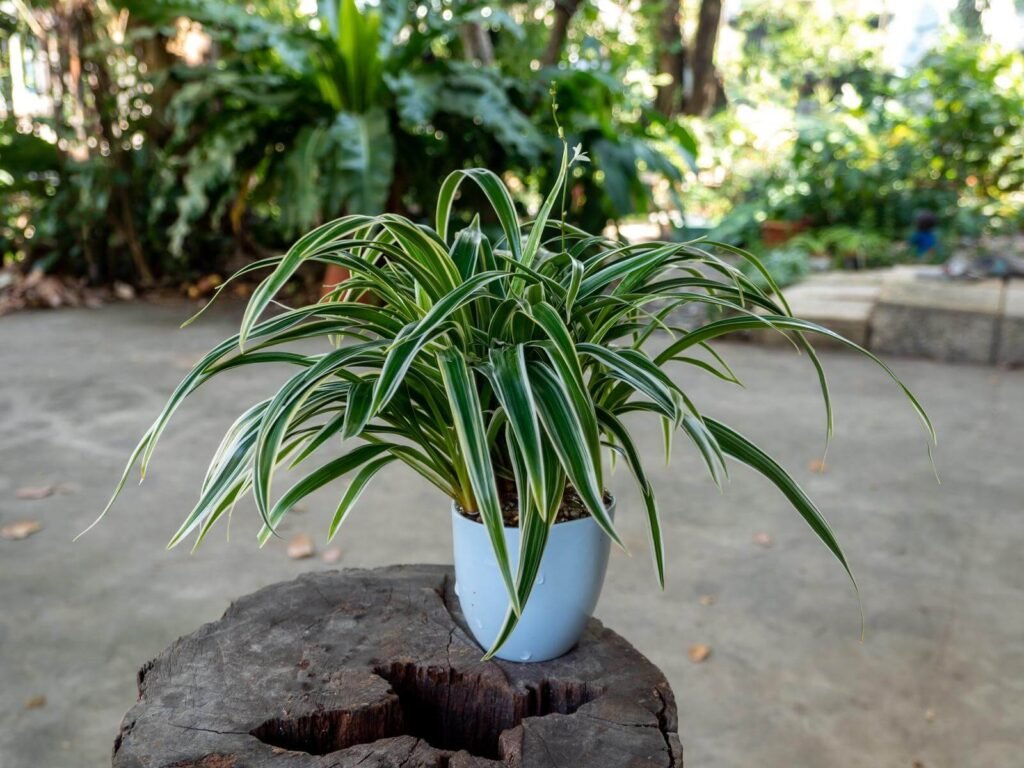
“The Spider Plant is a versatile and resilient houseplant that not only adds beauty to your indoor spaces but also works hard to clean your air.”
To summarize the benefits of the Spider Plant:
- Efficiently removes carbon monoxide and xylene, improving indoor air quality.
- Thrives in low-light conditions, making it suitable for various areas in your home.
- Requires minimal maintenance, perfect for busy individuals or those new to indoor gardening.
| Benefits of Spider Plant | Indoor Air Pollutants Eliminated |
|---|---|
| Air purification | Carbon monoxide, xylene |
Gerbera Daisy
Gerbera Daisies not only offer aesthetic appeal with their vibrant blooms but also excel at absorbing benzene, a hazardous compound. They are known to increase oxygen levels and contribute to enhanced air quality.
In addition to their stunning beauty, Gerbera Daisies have natural air purifying qualities that make them ideal for indoor spaces. These lovely flowers, scientifically known as Gerbera jamesonii, act as effective air purifiers by absorbing benzene, a toxic compound commonly found in household items such as cleaning agents, detergents, and tobacco smoke.
Benzene is a volatile organic compound (VOC) known to contribute to respiratory issues, such as asthma and allergies, and long-term exposure can even lead to more serious health problems. By having Gerbera Daisies in your home, you can reduce your exposure to benzene and create a healthier living environment.
“Gerbera Daisies are not only visually appealing but also have the ability to improve the quality of indoor air by absorbing benzene, a harmful pollutant.”
In addition to their air-purifying properties, Gerbera Daisies release oxygen during the daytime through a process called photosynthesis. The increased oxygen levels can promote a sense of wellbeing and vitality, making your indoor space feel fresher and more invigorating.
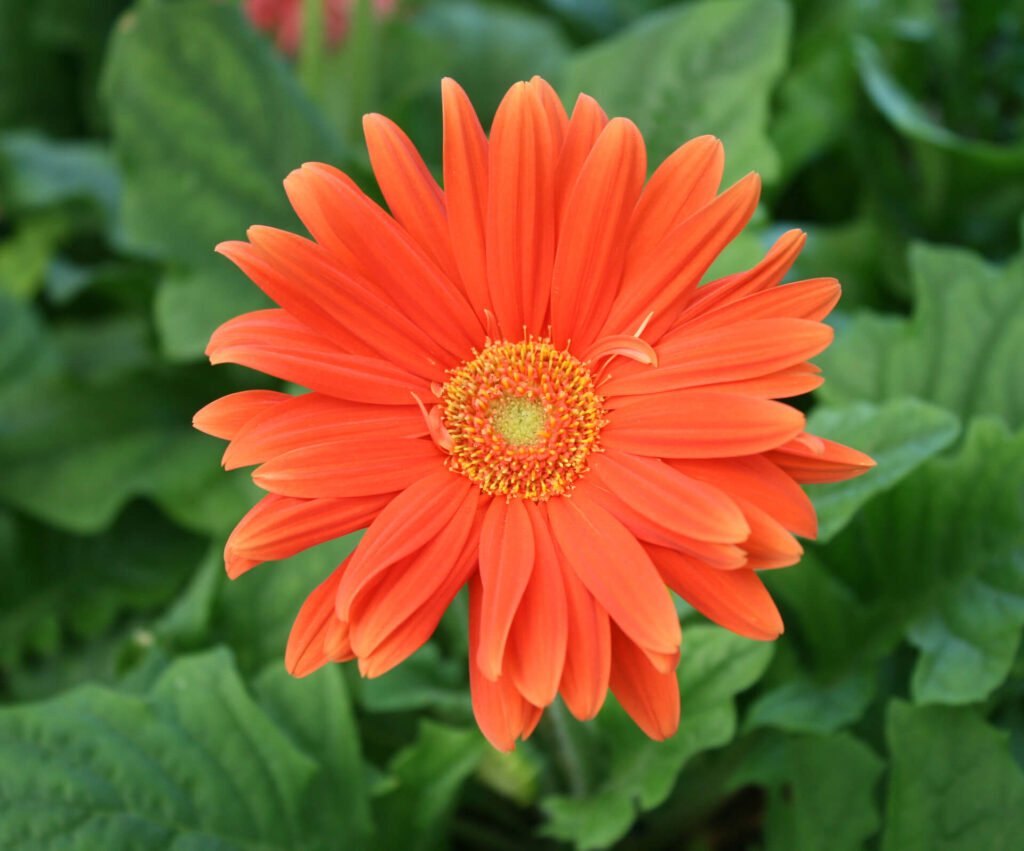
Whether you place them in your living room, kitchen, or workspace, Gerbera Daisies can add a touch of beauty while enhancing the air quality of your indoor environment.
Benefits of Gerbera Daisies:
- Provide aesthetic appeal with vibrant blooms
- Act as natural air purifiers, absorbing benzene
- Increase oxygen levels, promoting a sense of wellbeing
Areca Palm
The Areca Palm, scientifically known as Dypsis lutescens, is a popular choice among indoor plant enthusiasts for its aesthetic appeal and powerful air-purifying capabilities. This elegant palm has been scientifically proven to purify indoor air by absorbing harmful chemicals and filtering out indoor air pollutants, making it an excellent choice for improving indoor air quality.
One of the key features of the Areca Palm is its ability to thrive in a sunny environment and warm climates. It requires bright, indirect light to flourish, which makes it an ideal addition to rooms with ample natural light. By placing an Areca Palm in a sunny spot, you can enhance the beauty of your space while also enjoying the benefits of cleaner, fresher air.
This tropical palm not only adds a touch of greenery to your indoor space but also acts as a natural air purifier, effectively removing toxins and contributing to a healthier living environment. Its lush foliage and graceful appearance make it a visually appealing choice for any room.
Key Features of the Areca Palm:
- Purifies indoor air by absorbing harmful chemicals and pollutants
- Thrives in sunny environments and warm climates
- Requires bright, indirect light
- Enhances indoor air quality
- Contributes to a healthier living environment
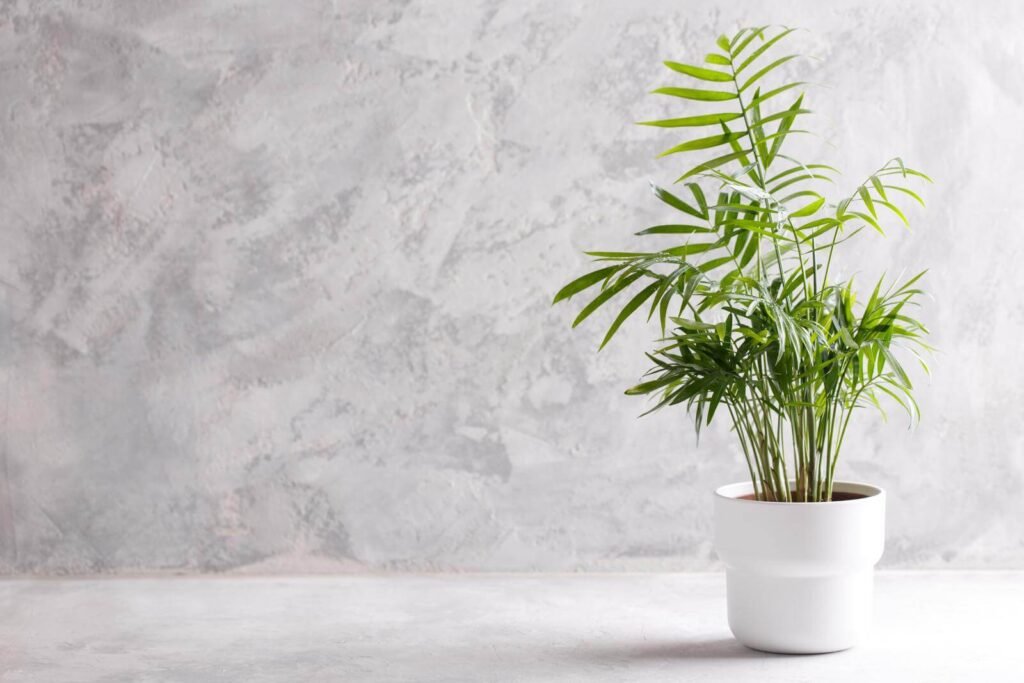
With its air-purifying properties and ability to thrive in sunny environments, the Areca Palm is a top choice for those looking to improve indoor air quality while also adding a touch of tropical beauty to their space.
Peace Lily
The Peace Lily, scientifically known as Spathiphyllum wallisii, is not only renowned for its elegant white blossoms but also for its remarkable air-purifying qualities. As an efficient air purifier, the Peace Lilyplays a crucial role in improving indoor air quality.
These graceful plants have the ability to enhance oxygen levels by absorbing carbon dioxide from the surrounding environment. By doing so, Peace Lilies contribute to a healthier atmosphere, promoting better respiratory health.
“Peace Lilies excel at neutralizing harmful indoor pollutants, making them a popular choice for those seeking cleaner, fresher air.”
Not only do Peace Lilies remove carbon dioxide and release oxygen, but they also neutralize a variety of indoor pollutants, including volatile organic compounds (VOCs) and formaldehyde. VOCs can be emitted by common household items such as paints, cleaning products, and furniture.
| Pollutant | Effectiveness in Neutralizing |
|---|---|
| Formaldehyde | Highly effective |
| Volatile Organic Compounds (VOCs) | Effective |
| Carbon Dioxide | Highly effective |
Peace Lilies are not only functional but also aesthetically pleasing, adding elegance and beauty to any indoor space. Their elegant white blossoms make them a popular choice for interior decoration.
Golden Pothos
Golden Pothos, scientifically known as Epipremnum aureum, is a popular vine that not only adds beauty to your indoor space but also plays a significant role in purifying the air. This plant is highly effective in eliminating indoor toxins, making it an excellent choice for improving air quality.
One of the standout qualities of Golden Pothos is its ability to consume carbon dioxide and release oxygen, promoting a healthier living environment. Additionally, it requires minimal maintenance, making it a hassle-free option for those seeking a low-maintenance plant.
Studies have shown that Golden Pothos can efficiently remove indoor toxins such as formaldehyde, benzene, and other volatile organic compounds (VOCs), commonly found in cleaning products, furniture, and carpets. By incorporating this air-purifying plant into your space, you can significantly reduce the concentration of harmful chemicals in the air.
Golden Pothos is a low-maintenance air purifier that effortlessly eliminates indoor toxins, creating a healthier and more oxygenated living environment.
Whether you place it in a hanging basket or let it trail from a shelf, Golden Pothos is sure to add a touch of beauty and vitality to your home or office space. Its vibrant green leaves cascade elegantly, creating a visually appealing aesthetic.
As an additional benefit, Golden Pothos is also believed to have stress-reducing qualities, making it a perfect plant for creating a calming atmosphere in any space. Its lush foliage and air-purifying abilities contribute to a serene and refreshing environment.
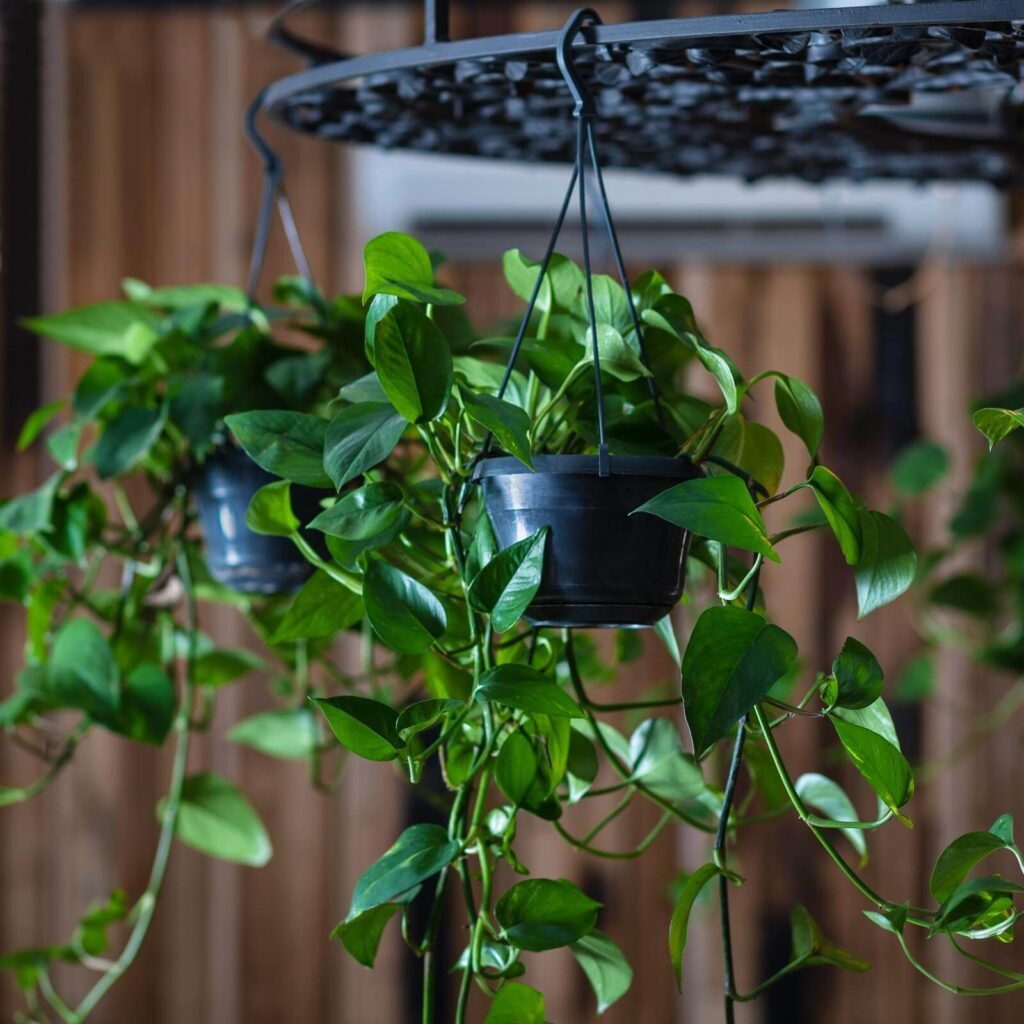
To reap the maximum benefits of Golden Pothos, it’s recommended to place this plant in well-lit areas, although it can also tolerate low-light conditions. Ensure that you water it thoroughly but avoid overwatering, as excessive moisture can lead to root rot.
Discover the beauty and air-purifying benefits of Golden Pothos, a low-maintenance indoor plant that effectively eliminates indoor toxins while enhancing oxygen levels.
Benefits of Golden Pothos:
- Efficiently eliminates indoor toxins like formaldehyde and benzene
- Contributes to a healthier and more oxygenated living environment
- Requires minimal maintenance
- Reduces stress and promotes a calming atmosphere
- Can thrive in both well-lit and low-light conditions
Snake Plant – Oxygenating Air Purifier with Low-Maintenance Care
The Snake Plant, scientifically known as Sansevieria trifasciata, is a renowned air purifier that excels in oxygen production and effectively filters airborne chemicals. This stunning indoor plant not only enhances the aesthetic appeal of any space but also contributes to a healthier environment.
Snake Plants are highly regarded for their ability to remove indoor pollutants and improve air quality. They have been extensively researched and utilized in healthcare settings to promote cleaner and fresher air.
Benefits of Snake Plant
Snake Plants offer numerous benefits, making them a popular choice for indoor environments:
- Produces oxygen and improves indoor air quality
- Filters harmful airborne chemicals
- Thrives in low-light conditions
- Requires minimal maintenance
- Enhances the aesthetic appeal of any space
Snake Plants are particularly effective at removing toxins such as formaldehyde, trichloroethylene, benzene, and xylene from the air. These harmful chemicals are commonly found in cleaning products, paint, furniture, and other household items.
“Snake Plants are a beautiful addition to any space, providing both visual appeal and air purification benefits. With their oxygen-producing capabilities and low-maintenance care, they are an excellent choice for anyone seeking a convenient and effective way to improve indoor air quality.”- Interior Designer Jane Thompson
Caring for Snake Plants
Snake plants are known for their easy care requirements, making them a popular choice for both experienced and novice plant enthusiasts. Follow these tips to keep your Snake Plant thriving:
- Place in indirect sunlight or low-light conditions
- Water sparingly, allowing the soil to dry between waterings
- Avoid overwatering, as it can lead to root rot
- Ensure proper drainage by using well-draining soil and pots with drainage holes
- Wipe the leaves with a damp cloth to remove dust and promote photosynthesis
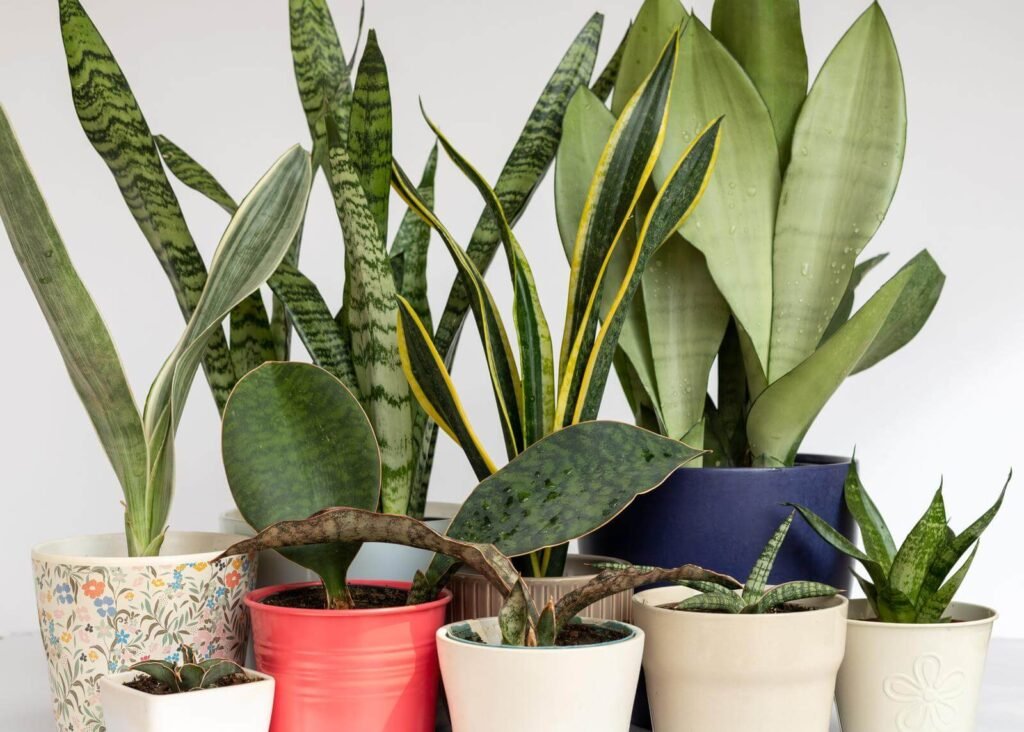
By providing these basic care requirements, your Snake Plant will continue to purify the air and enhance your indoor environment.
| Snake Plant | Benefits |
|---|---|
| Air Purification | Removes toxins, filters airborne chemicals |
| Oxygen Production | Increases oxygen levels in the air |
| Low-Maintenance | Requires minimal care and attention |
| Aesthetic Appeal | Enhances the visual appeal of any space |
Introducing a Snake Plant into your home or office is a simple yet significant step towards improving indoor air quality. Its natural air purifying properties, oxygen production, and low-maintenance caremake it a perfect choice for anyone looking to create a healthier and more enjoyable living environment.
Conclusion
By incorporating the best indoor plants for oxygen into your home, you can naturally enhance your indoor air quality. These air-purifying plants excel at increasing oxygen levels and offer numerous health benefits. They act as natural air filters, improving indoor air quality and promoting better respiratory health.
The top indoor plants for clean air include varieties such as the Boston Fern, Weeping Fig, Aloe Vera, Spider Plant, Gerbera Daisy, Areca Palm, Peace Lily, Golden Pothos, and Snake Plant. These oxygen-producing houseplants not only beautify your living space but also contribute to a fresher, more oxygenated environment.
Indoor plants that promote better respiratory health help in improving overall well-being. They effectively remove toxins and indoor pollutants, creating a healthier living environment. These natural air filters for the home offer aesthetic appeal, increased oxygen levels, and low-maintenance care. Incorporating these indoor plant varieties for better air quality is a sustainable and effective way to improve your indoor air and enjoy the health benefits of indoor plants.
Source Links
- https://www.goodhousekeeping.com/uk/house-and-home/g32319013/air-purifying-plants/
- https://www.respiratorytherapyzone.com/plants-for-increasing-oxygen/
- https://nurserylive.com/blogs/top-10-plants/top-10-highest-oxygen-producing-indoor-plants
Frequently Asked Questions
Q: What are the benefits of having indoor plants?
A: Indoor plants help clean the air, reduce indoor air pollution, and increase oxygen levels in your home.
Q: Which indoor plants are best for increasing oxygen levels?
A: Some of the best indoor plants for increasing oxygen levels are snake plant, peace lily, spider plant, and aloe vera.
Q: Do indoor plants really release oxygen at night?
A: Yes, many indoor plants release oxygen at night, which can help improve the indoor air quality while you sleep.
Q: How do air-purifying houseplants help with indoor air pollution?
A: Air-purifying houseplants are known to remove toxins from the air and help clean the air indoors, reducing the effects of indoor air pollution.
Q: Can indoor plants help with increasing oxygen levels in a room?
A: Yes, indoor plants can help increase oxygen levels in a room by producing oxygen through photosynthesis and releasing it into the air.
Q: What are some examples of flowering indoor plants that produce the most oxygen?
A: Some examples of flowering indoor plants that produce the most oxygen include peace lily, gerbera daisy, and chrysanthemum.
Q: Are there any specific plants known for their ability to release oxygen at night?
A: Yes, some plants known for their ability to release oxygen at night include aloe vera, snake plant, and orchid.
Q: Which indoor plants are easy to care for and also produce oxygen?
A: Some of the indoor plants that are easy to care for and also produce oxygen include spider plant, snake plant, and pothos.
Q: Can indoor plants really help with reducing indoor air pollution?
A: Yes, indoor plants can help reduce indoor air pollution by absorbing toxins from the air and purifying the indoor air.
Q: Where can I find a list of popular air-purifying houseplants for indoors?
A: You can find a list of popular air-purifying houseplants for indoors through online gardening websites and plant nurseries that specialize in indoor plants.
